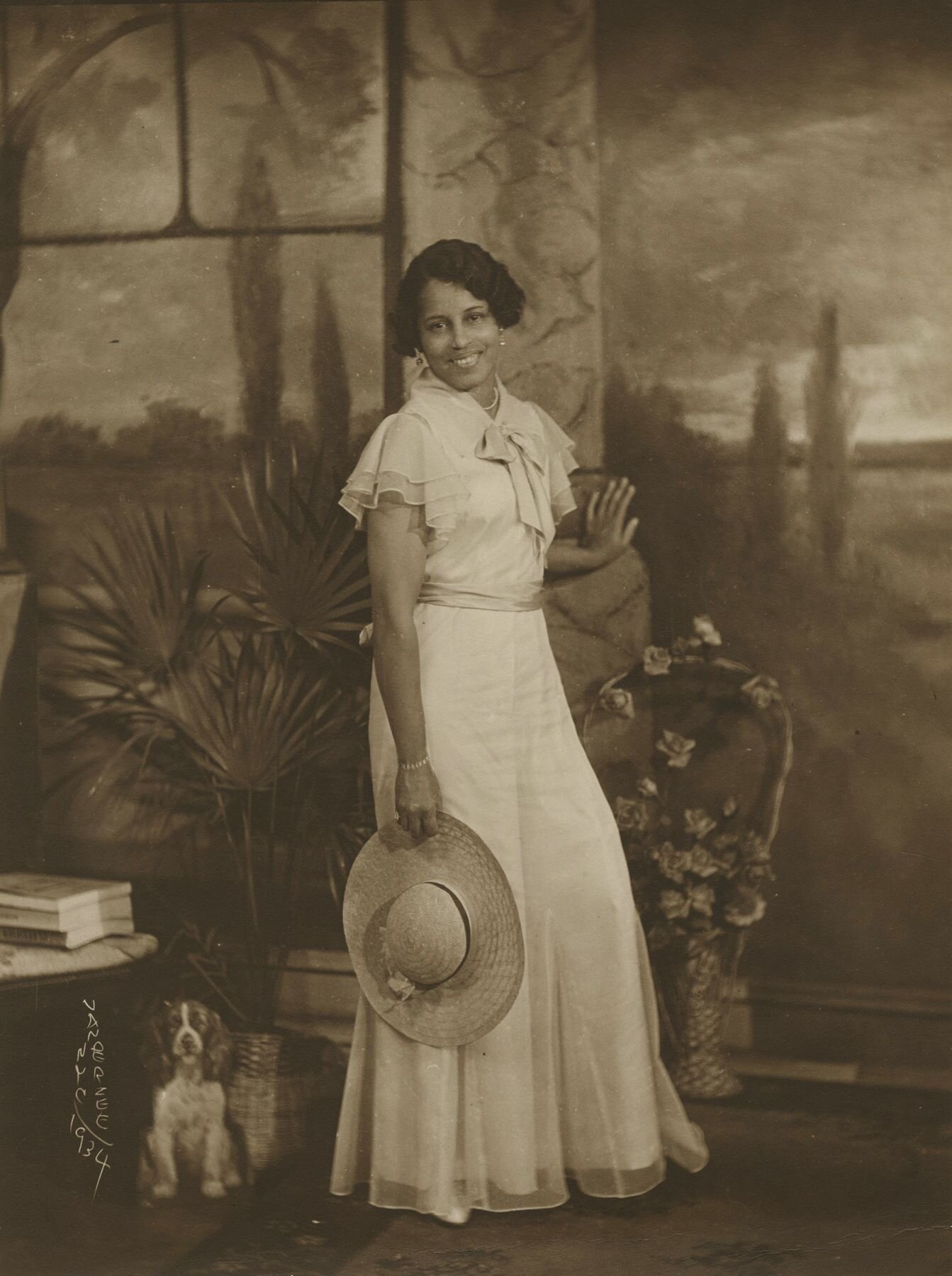Harlem Renaissance was a multidisciplinary African-American cultural movement that was prolific during the 1920 and 30s. It was best know for it’s literacy work and performing arts. Writers such as Alain LeRoy Locke and musicians such as Louis Armstrong were all part of the movement, as well; photographers, painters, illustrator and sculptors. The movement promoted pride in African-American life and identity. African-American artists were taking pride in who they were, they were often inspired and encouraged by European artists as well each other. They looked back to their African roots their heritage, this had a strong influence on their work.
Aaron Douglas is considered the father of African American Art he was influenced by cubism and West African art. His first major commission as an illustrator was for Alain’s Locke’s book “The New Negro”. He combines stylised cubism, geometric shaped and art-deco style in his work.
Dust jacket by Aaron Douglas for Claude McKay's book A Long Way from Home (1937).Between the Covers Rare Books, Merchantville, NJ
James Van Der Zee captured life for African American’s within his home town and in Harlem, New York through his elegant photography.
Lady with Wide-brimmed Straw Hat, 1934
Gelatin silver print; printed c.1934
9 1/2 X 7 inches
Palmer Hayden reclaimed visual stereotypes and formed his own visual language from them. His work empowers the African-American community and portrays it honesty. His paintings tend to focus on the narratives of ordinary people, without be overly romanticised or exaggerated. They are sincere depictions. Hayden is reclaiming the narrative and visual identity of African-Americans.
Palmer Hayden, The Janitor Who Paints, ca. 1930, oil on canvas
Augusta Savage was the first African-American woman to open her own art gallery in America - ‘The Salon of Contemporary Negro Art’. Her sculptures portray the strength, beauty and dignity of African Americans.
Augusta Savage, Gwendolyn Knight, 1934–35. Courtesy of the Walter O. Evans Collection of African American Art.
This movement is an incredibly powerful and significant not just for the back community but for art and world culture. African Americans were now free people, free to be creative and free to express themselves and that passion shows in their work. This movement developed and affirmed the black community. Savage once said, “We do not ask any special favours as artists because of our race. We only present to you our works and ask you to judge them on their merits.” Their work has sadly not been presented in European art history, it has been overlooked despite it’s significance. Their work is incredible and has so much power behind the narrative of each creative piece. I would really recommend further reading into this wonderful movement it has so much to offer.
Sources
https://www.theartstory.org/movement/harlem-renaissance/
https://uk.phaidon.com/agenda/art/articles/2016/october/05/a-movement-in-a-moment-the-harlem-renaissance/
https://www.nga.gov/education/teachers/lessons-activities/uncovering-america/harlem-renaissance.html
https://www.britannica.com/biography/Aaron-Douglas
http://www.howardgreenberg.com/artists/james-van-der-zee?view=slider#2
https://www.studyblue.com/?src_url=https://www.studyblue.com/notes/note/n/bws-art/deck/4838224#flashcard/view/4838224
https://www.theguardian.com/artanddesign/2019/may/08/augusta-savage-black-artist-new-york
https://www.artsy.net/article/artsy-editorial-sculptor-augusta-savages-towering-impact-harlem-renaissance




